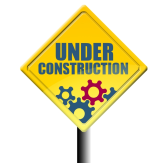Considering creating a new Web site or redesigning your existing one? Unfortunately, many businesses jump into building or redesigning their sites without the necessary research and planning needed to ensure that it achieves their goals.
Lack of proper planning almost always results in wasted time and money.
Here are four key questions to ask during the planning stage:
- Who do I want my Web site to attract?
- How will my Web site attract them?
- What do I want my Web site to provide them?
- What do I want from visitors?
1. Who do I want my Web site to attract?
Your Web site can be your most powerful sales and marketing asset. In order to make it perform to its full potential, you need to understand who your prospects are and how they look for you online.
Realize that your customer and prospect bases consist of many subsets with different wants, needs and levels of knowledge of your products or services. In almost every case, taking a one-size-fits-all approach won’t work.
Don’t assume that you know how people search for your business online. Keyword research is essential to attracting the right types of visitors to your site.
2. How will my Web site attract them?
What good is building an amazing Website if no one can find it? There are a variety of ways to promote your site including SEO, paid search advertising and social media marketing. Although there has been a lot of speculation about where the industry is going in the future, the truth of the matter is that search engines are where the majority of people search for information and Google is the 800 pound gorilla of internet marketing.
Search engine marketing consists of two distinctly different methods — search engine optimization, or SEO, and paid search advertising, often referred to as pay per click advertising, or PPC.
When designing or redesigning your Web site, make sure to optimize it so that it will be found and displayed by search engines.
3. What do I want my Web site to provide?
You only get one chance to make a first impression. Once a prospect finds your Website, you need to engage them by providing the valuable information they’re looking for in a concise, appealing manner. The average amount of time people spend on Web pages is typically less than two minutes so don’t waste their time with unnecessary fluff. If they want to hear the story of how your great grandfather started the business they’ll click on the “About Us” link. At this point in the sales process, however, they’re not really interested in reading about it.
Remember, your competition is just a few mouse clicks away, so don’t make your prospects dig for answers to their questions.
If your site design requires visitors to scroll on your Home page, make sure you provide clearly visible calls to action and links to interior pages and important areas of the Home page “above the fold”.
4. What do I want from your site visitors?
Obviously, you want visitors to your site to purchase a product or service from your business. In most cases, this isn’t going to happen on the first visit, so you need to give them a reason to return at some future date. Be sure to provide visitors with other valuable resources and easy ways to bookmark and share your site.
Depending on your business, you might give visitors the option to:
- Download a whitepaper
- Print a discount coupon
- Subscribe to your newsletter or blog
- Connect with you through social media platforms like Facebook and Twitter
- Share your site using a social bookmarking site like Stumbleupon.com
People are increasingly concerned about their privacy and fearful of being spammed. When asking visitors to complete forms in order to receive offers or information, don’t ask them to provide more personal information than you need. In most cases, the prospect’s name and one contact method (phone number or email address) is sufficient. You should also assure them that you will not sell or share their information with third-parties.
Ensuring that your Web site is both user-friendly and search engine-friendly “out of the box” will save you time and money in the long run.
Image Credit: Salvatore Vuono

